


ChessBase 17 - Mega package - Edition 2024
It is the program of choice for anyone who loves the game and wants to know more about it. Start your personal success story with ChessBase and enjoy the game even more.
The first shift came with ChessBase 12 with the introduction of Let’s Check and Deep Analysis. While Deep Analysis allowed for extended research of a single position, Let’s Check was the function that allowed one to submit the game to the Let’s Check server and have others analyze the game for you. This usually meant a variety of engines being used from a variety of computers, which in turn meant no control over the quality, though it did serve as an efficient blunder check. If you just wanted a quick low-down on the more serious mistakes, it did its job efficiently. Still, if you wanted more control and fully automated analysis you really had to use the Fritz interface… until now.
Among the myriad new functions and changes in ChessBase 14, some of which will only really be noticed by veteran users (though appreciated by all), are the various analysis functions. One of the most interesting for general users is called Tactical Analysis.

ChessBase brings its own tactical analysis feature to analyze your play
The name Tactical Analysis makes it sound as if it only caught tactical mistakes, but the truth is that it is quite a bit more than that, and could easily fulfill a user’s complete automated analysis needs, especially when combined with the other features already available in ChessBase. In a nutshell, it will do a full analysis of a game of your choice, taking the amount of time requested, with a light combination of natural language comments and color commentary (arrows, highlight squares), and even setting up Training questions.
To illustrate its versatility, let’s take a look at the game Maxime Vachier-Lagrave - Veselin Topalov played just a day ago in London, and see what Tactical Analysis makes of it.
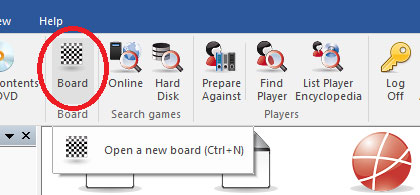
First we need to open a board in ChessBase with the game

If you have a PGN with it, by all means open it and the game, otherwise you can just enter Playchess, open the game, copy it to the clipboard (a simple Ctrl-C)…
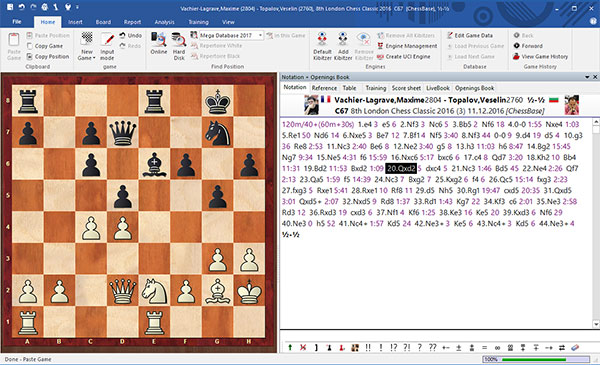
… and then paste it on the empty board window in ChessBase (Ctrl-V).

Now go to the Analysis tab at the top, and then click on Tactical Analysis
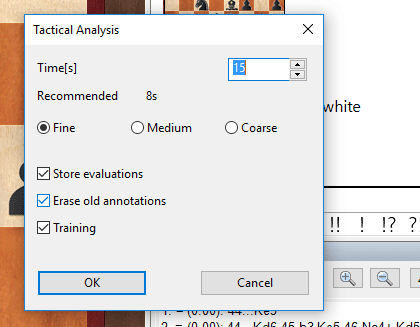
A small window will open with a few options
The recommendation is to leave it at 8s, and this is the time spent per move. To understand better how much time this means, consider that in the case of our game, there are 44 moves, meaning one for white and one for black, for a total of 87 total moves to analyze (there is no 44th black move). Tactical Analysis will also not analyze basic opening moves, using the online Live Book as its reference, so let’s say 70 moves in all. That would mean 70 times 8 seconds, or 560 seconds, or somewhere around 10 minutes (the eight seconds is not absolute). For the sake of this tutorial, 15 seconds was chosen, and sure enough it took about 20 minutes.
The Erase old annotations means it will clear the game of any other comments first, text or variations, before starting. Finally, the Training option means it will create and insert Training questions for you to answer. These might be to see if you find the move played in the game, or the better move its analysis found. Once you have selected your choices, click Ok.
| Tip: The engine used for the Tactical Analysis is the last one you used. So if you want a different one, before running Tactical Analysis, start the engine you want as a plain kibitzer (Ctrl-K) and then close it. It will now be the new default one used. |
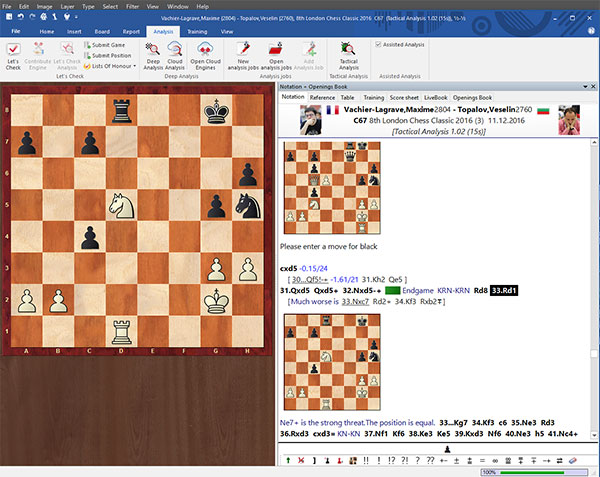
It will now go through the entire game, analyzing it. Once done, you can close the Live Book pane and the engine pane to see the full analysis with Training questions.
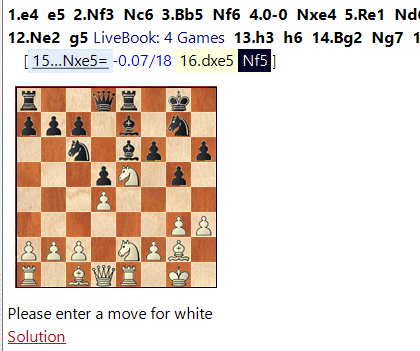
The notation will present a number of Training questions to solve
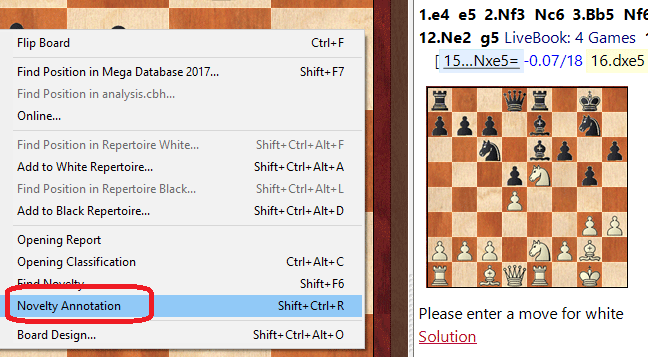
In order to increase the quality of the result, we can now right-click on the board, and select Novelty Annotation. This will scour the game and not only locate where the novelty was, but use a high quality game as a reference.
The end result is what you see here:

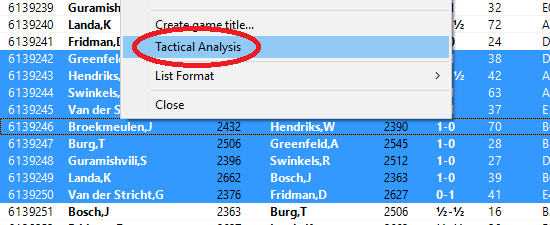
Finally, you can also do batch analysis by opening a database games list, highlighting the games you want, and then right clicking and choosing Tactical Analysis.
| Advertising |